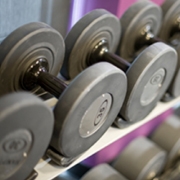An Expanding Market Keeps Gyms Fighting Fit
by IBIS World (Industry Resource)
 Australians are battling the bulge – and are not the only ones. Governments around the world are debating taxing unhealthy food and drink in a bid to combat rising obesity. Denmark imposed the world’s first so-called ‘fat tax’ on high-fat foods in October 2011. Despite being one of the most obese countries in the world, Australia has taken no such measures. Instead, governments have focused on advertising campaigns to encourage exercise and healthy eating. This promoted participation in fitness activities in the past five years.
Australians are battling the bulge – and are not the only ones. Governments around the world are debating taxing unhealthy food and drink in a bid to combat rising obesity. Denmark imposed the world’s first so-called ‘fat tax’ on high-fat foods in October 2011. Despite being one of the most obese countries in the world, Australia has taken no such measures. Instead, governments have focused on advertising campaigns to encourage exercise and healthy eating. This promoted participation in fitness activities in the past five years.
Australians do not view fitness as a discretionary expense. Despite cautious consumer spending and economic pessimism, Australians are spending on the things they feel are important, including fitness. Total expenditure on fitness is expected to increase 2.4% in 2011-12, to $2.87 billion. Encouraged by programs like the Biggest Loser, Australians are becoming more likely to invest in their long-term health and wellbeing. Although Australia has a reputation as a nation of sport lovers, sport participation has been growing at a slower rate than gym membership, as fitness providers gain more attention as a proven path to better health.
Gyms are no longer considered exclusively for highly fit athletes or gym junkies. The potential market for fitness operators has expanded. Gyms and fitness centres have broadened their services to cater for this larger market and to increase their competitiveness. Many now offer specialised services for every age and fitness level, including classes targeted at children and pregnant women. Specialised services for older age groups and women were some of the fastest growing markets for the fitness industry in the past five years. The women-only fitness centre Curves, for example, has expanded rapidly to boast more establishments than any other fitness provider in Australia. More Australians are also trying new fitness activities such as dance-exercise fusion Zumba, Pilates, yoga, tai chi, Body Pump and Muay Thai.
As Australia’s willingness to spend on health and fitness continues to increase, IBISWorld expects that fitness industry revenue will grow 3.6% per annum over the five years through 2016-17. Older Australians will drive future growth as the population ages and more people acknowledge the benefits of exercise for a healthier and better quality life.
|
|
|









 Australians are battling the bulge – and are not the only ones. Governments around the world are debating taxing unhealthy food and drink in a bid to combat rising obesity. Denmark imposed the world’s first so-called ‘fat tax’ on high-fat foods in October 2011. Despite being one of the most obese countries in the world, Australia has taken no such measures. Instead, governments have focused on advertising campaigns to encourage exercise and healthy eating. This promoted participation in fitness activities in the past five years.
Australians are battling the bulge – and are not the only ones. Governments around the world are debating taxing unhealthy food and drink in a bid to combat rising obesity. Denmark imposed the world’s first so-called ‘fat tax’ on high-fat foods in October 2011. Despite being one of the most obese countries in the world, Australia has taken no such measures. Instead, governments have focused on advertising campaigns to encourage exercise and healthy eating. This promoted participation in fitness activities in the past five years.